Owari-cho Citizens’ Cultural Hall
This storehouse building is the Owari-cho Citizens’ Cultural Hall.
The building was originally built in 1907 as the Kanazawa Savings Bank.
It was once a branch of the Prefectural Museum of Folklore and History, but was transferred to the Owari-cho Mall promotion association in 1986.

Let’s go inside.
Admission is free.
Once inside, you will find the (former) bank’s reception counter.
A sign is attached to the counter that reads “Kanazawa Savings Bank Owari-cho Head Office,” which may have been the name of the building when it was constructed? (I checked and it was called “Kanazawa Savings Bank Head Office” when it was completed.)
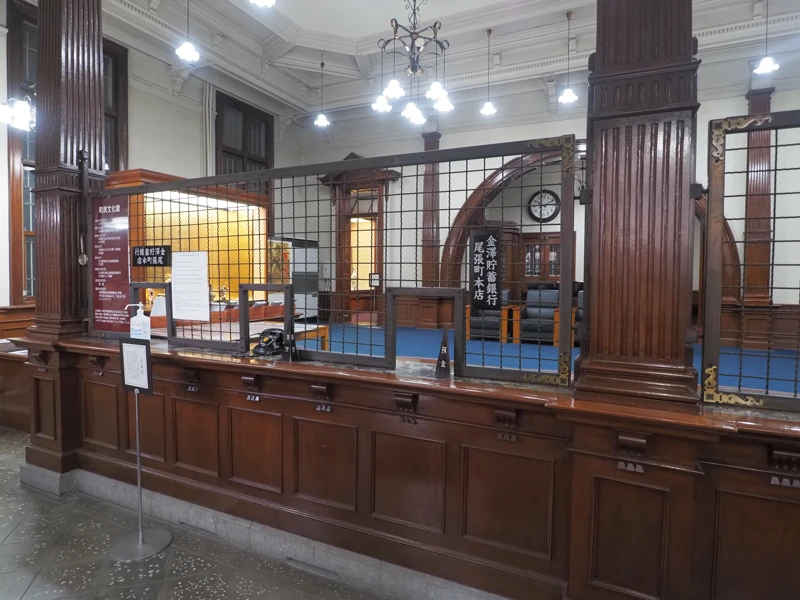
The following is a brief history of the building, which partly duplicates the first sentence.
In 1907, the new building was completed as Kanazawa Savings Bank.
1943, it became the Owari-cho branch of Hokuriku Bank.
1976, the Owari-cho branch was closed.
The Hokuriku Bank later donated the building to Ishikawa Prefecture. The building was designated as Ishikawa Prefecture Tangible Cultural Property.
1977 The building was opened as the Ishikawa Prefectural Folklore Museum Annex, a citizens’ cultural museum.
It was closed in 1986. The building was transferred to the Owari-cho Mall Promotion Association.
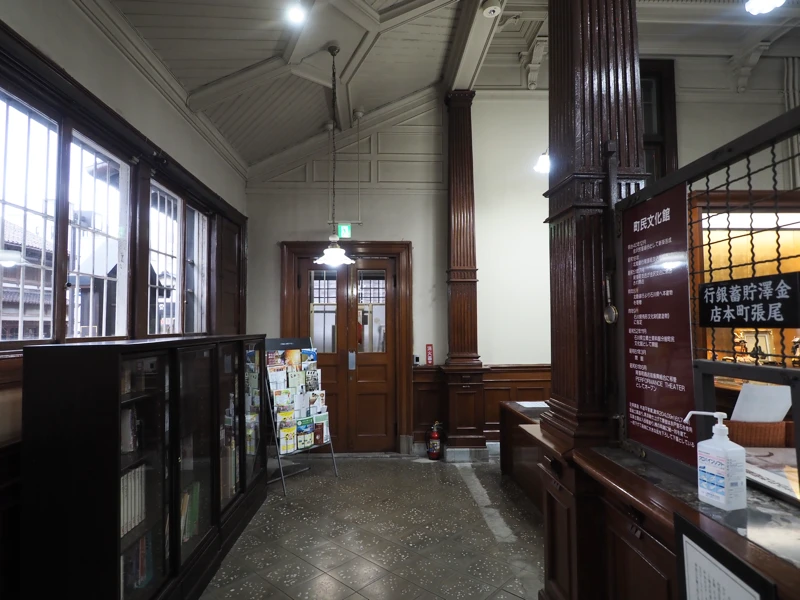
This room used to be a bank sales room.
Now there are no desks, but a hall with chairs.
They hold exhibitions every two months with a certain theme, and also use this room for events and concerts.
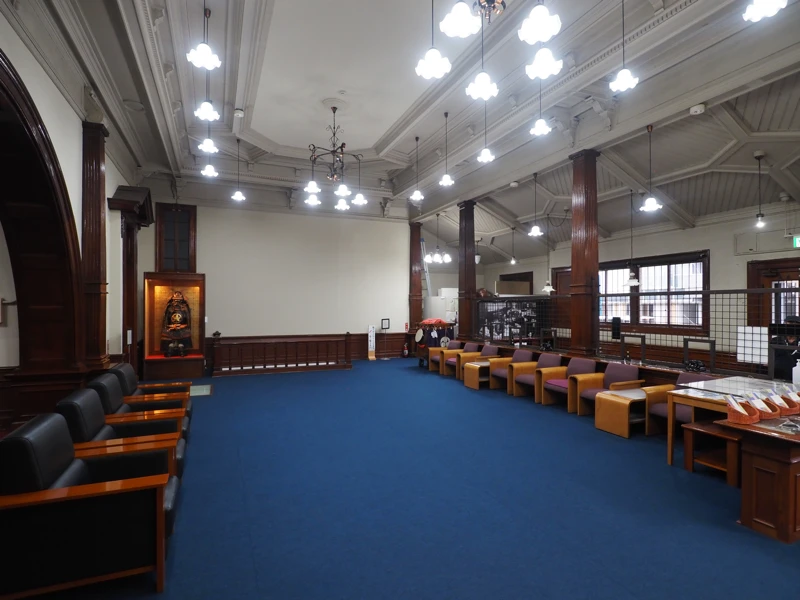
It is interesting that there is an archway like this at the back of the sales room.
Behind the archway, a piano is currently installed.
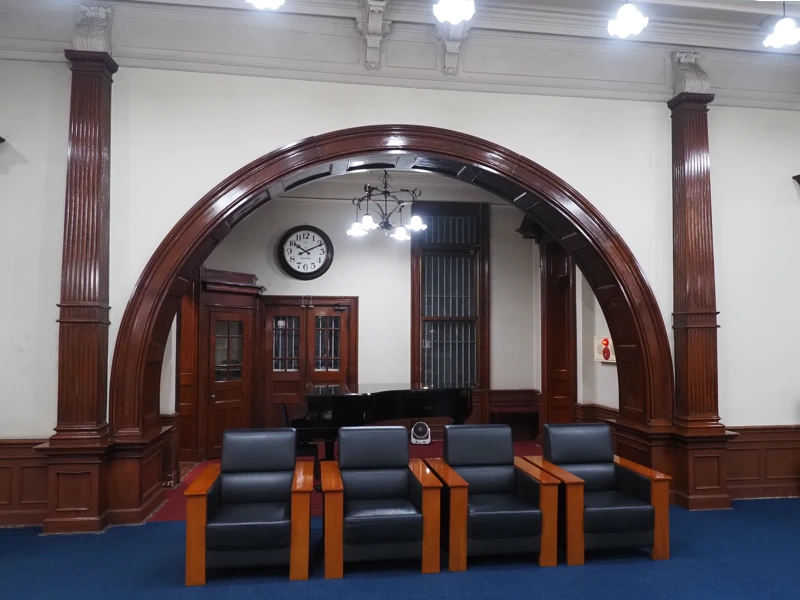
To the right is the president of bank’s office.
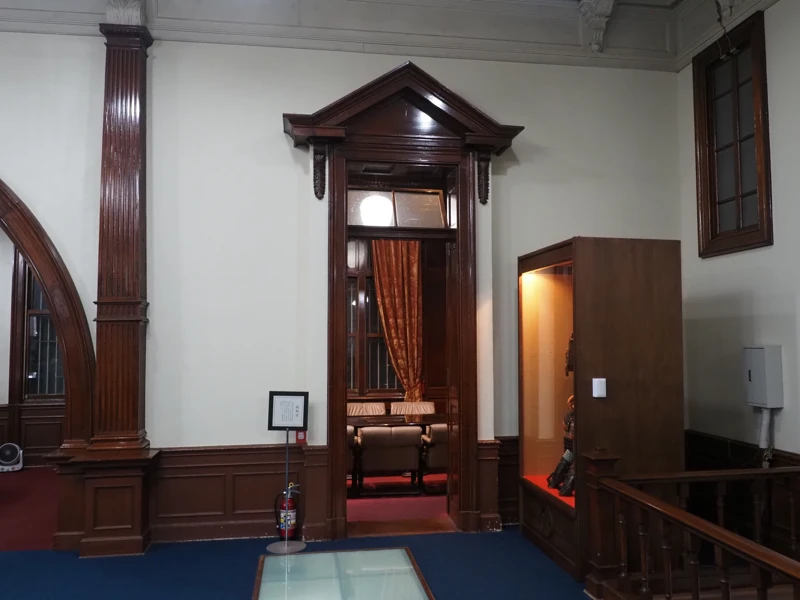
At the end of the sales room, there is a staircase leading down to the basement.
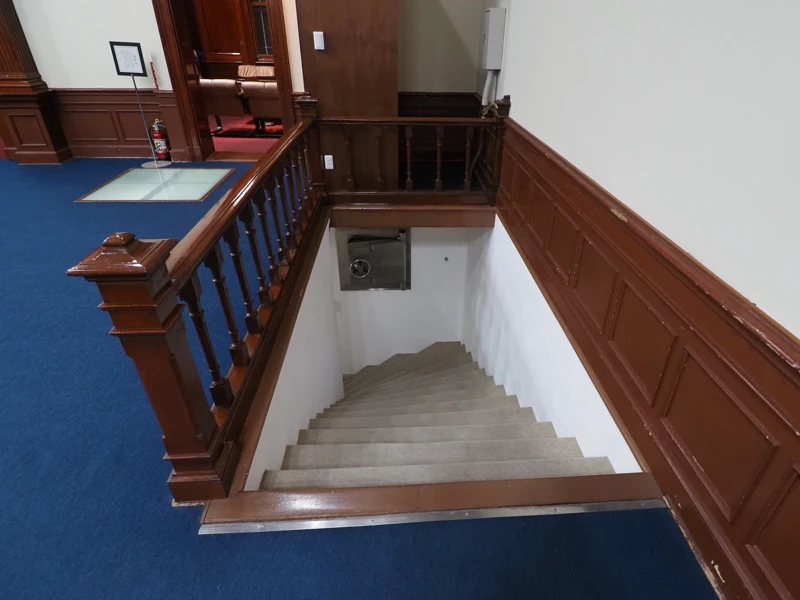
In the basement is the vault. Directly above this vault is the president’s office.
The vault had been off-limits due to its age, but was renovated in 2011. The interior and the entrance door were both renewed at that time.
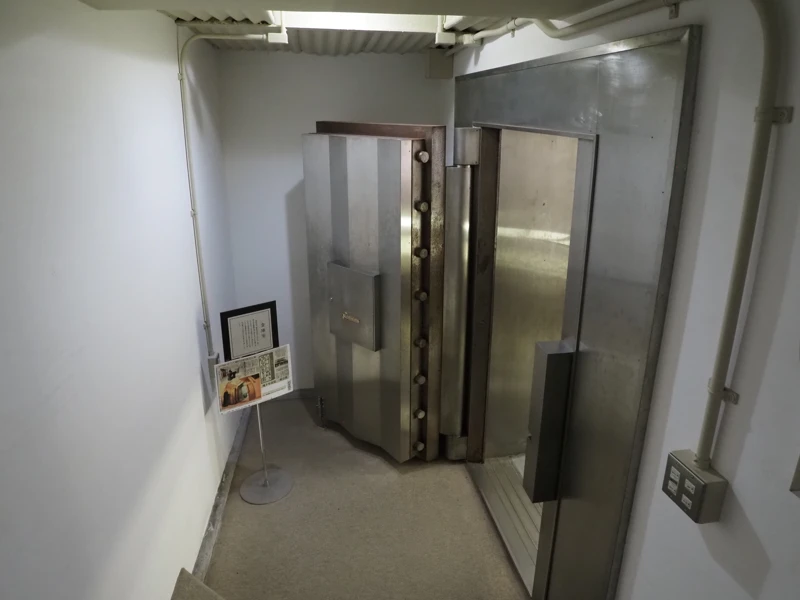
Currently, the vault is also used as an exhibition room, where the history of Kanazawa Savings Bank is displayed.
According to the exhibit, the basic design of this building was done by Nagaoka Heizo. He also designed the Juni Bank in Toyama Prefecture (1933) and the former Chuetsu Bank (1909: now Tonami Local History Museum in Tonami City).
The building is interesting in that the exterior is Japanese style and the interior design is Western style. The roofing structure supporting the Japanese-style roof is a Western-style king-post truss. It is said that the roof was made with a device such as extending the king-post in order to give the roof a warp.
Owari-cho was a town that housed merchants invited from Nagoya during the feudal domain era, and Kanazawa Savings Bank was established here in 1893. The present building was constructed as the head office in 1907.
From 1932, many banks were merged under the Financial Business Development Order.
In July 1933, Juni Bank, Takaoka Bank, Chuetsu Bank, and Toyama Bank merged to form Hokuriku Bank, which in turn merged with Kanazawa Savings Bank to form Hokuriku Bank Owari-cho Branch in December.
Go back up the stairs to the sales room.
Pillar and ceiling of the sales room.
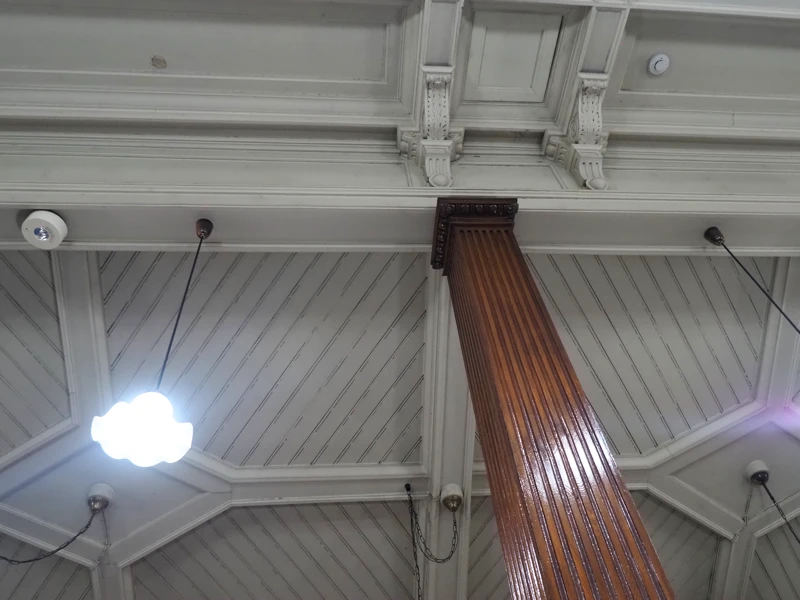
Decoration of the entrance to the bill collector’s room. The design is the same as the entrance to the president’s office.
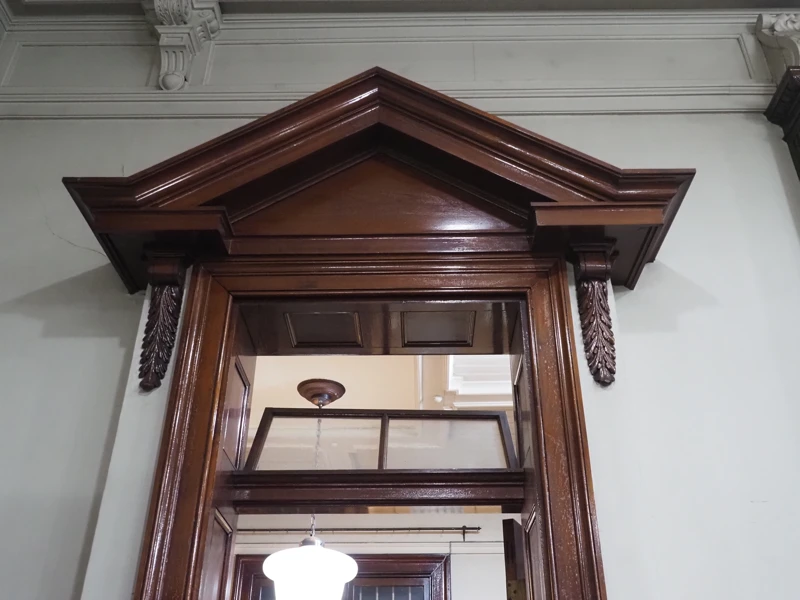
In July 1976, Hokuriku Bank merged the Owari-cho Branch with the Kanazawa Branch and closed the Owari-cho Branch. Owari-cho branch was donated by the bank to Ishikawa Prefecture in August and designated as a tangible cultural property by Ishikawa Prefecture in September.
In January 1977, it was opened as a branch of the Ishikawa Prefecture Local History Museum and the Citizens’ Cultural Museum. It is a facility that exhibits the cultural assets of the townspeople from the time of the feudal domain to the present, and the lion’s head and lion dance seem to have been the main items on display.
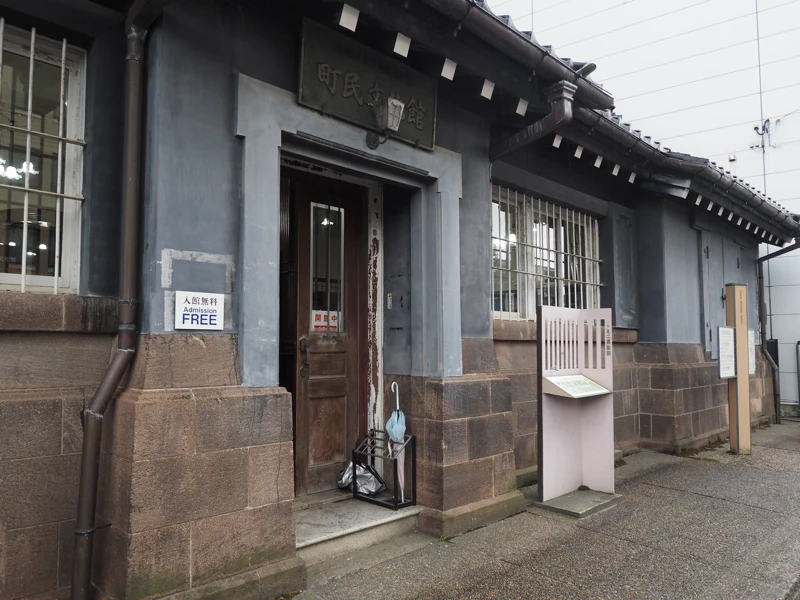
With the completion of the Ishikawa Prefectural Museum in 1986, the branch museum was closed.
After this, the local Owari-cho Mall Promotion Association acquired the building. Currently, the association operates the cultural museum.
At the beginning of this article, I noted that the building was tagged “Kanazawa Savings Bank Owari-cho Head Office,” probably because they wanted to put their town name “Owari-cho” on the facility they were operating.
[Reference]
“Cultural Properties of Ishikawa Prefecture" (Ishikawa History Publishing Association, Ishikawa Prefecture Cultural Properties Editorial Board / Ishikawa Prefectural Board of Education / 1985)
“Ten Stories of the mall: On behalf of the history of Owari-cho with long-established stores” (by Shuichi Ishino/ Owari-cho Mall Promotion Association / 1991)
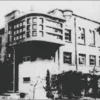
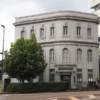


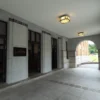
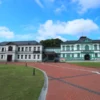
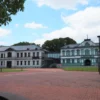
Discussion
New Comments
No comments yet. Be the first one!